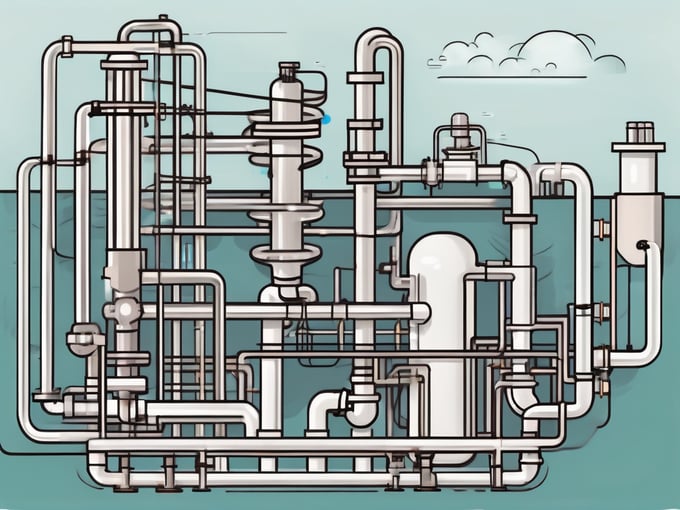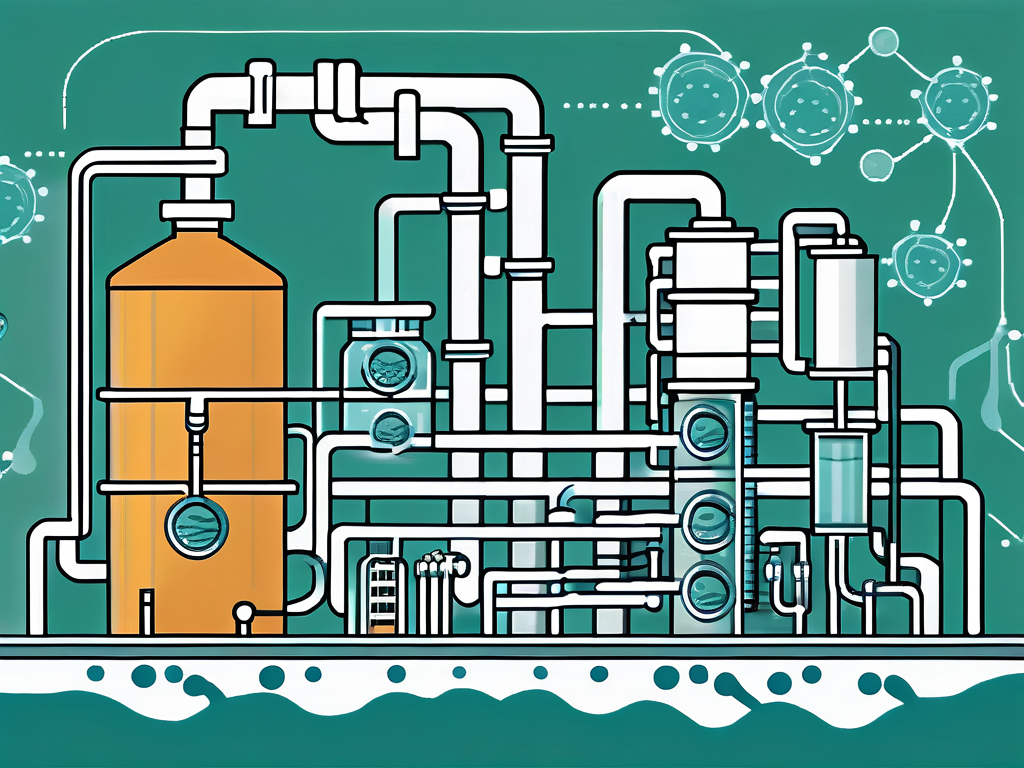
Endocrine Disruptors: Wastewater Treatment Explained
The field of wastewater treatment is a complex one, with a multitude of factors and variables to consider. One of the most critical aspects of this process is the removal of harmful substances, such as endocrine disruptors. These compounds can have significant effects on both human health and the environment, making their effective removal from wastewater a top priority.
Endocrine disruptors are chemicals that can interfere with the body's endocrine system, causing a range of health problems. They can be found in a variety of sources, including industrial waste, pharmaceuticals, and personal care products. When these substances enter the wastewater stream, they can pose a significant challenge for treatment facilities. This article provides an in-depth exploration of endocrine disruptors in the context of wastewater treatment, delving into their sources, their impacts, and the methods used to remove them.
Understanding Endocrine Disruptors
Endocrine disruptors are substances that can interfere with the body's endocrine system, which regulates a wide range of biological processes, including growth, development, and reproduction. These chemicals can mimic or block the actions of hormones, leading to a variety of health problems. While some endocrine disruptors are naturally occurring, many are man-made and can be found in everyday products such as plastics, cosmetics, and pesticides.
Endocrine disruptors can enter the environment in a variety of ways, including through industrial processes, agricultural runoff, and household waste. Once in the environment, they can be difficult to remove, persisting in soil, water, and air for long periods. This persistence, combined with their potential health impacts, makes endocrine disruptors a significant concern for both public health and environmental protection.
Sources of Endocrine Disruptors
Endocrine disruptors can come from a wide range of sources. Industrial processes, such as those used in the production of plastics and chemicals, can release these substances into the environment. Agricultural practices, including the use of pesticides and fertilizers, can also contribute to the presence of endocrine disruptors in the environment.
Household waste is another significant source of endocrine disruptors. Many common household products, including cosmetics, cleaning products, and even food packaging, can contain these chemicals. When these products are disposed of, they can end up in the wastewater stream, contributing to the overall load of endocrine disruptors that must be removed during treatment.
Impacts of Endocrine Disruptors
The impacts of endocrine disruptors on human health and the environment can be significant. In humans, these chemicals can interfere with the normal functioning of the endocrine system, leading to a variety of health problems. These can include reproductive issues, developmental problems in children, and an increased risk of certain types of cancer.
In the environment, endocrine disruptors can have a range of impacts on wildlife, particularly aquatic species. These chemicals can interfere with reproduction and development in fish and other aquatic organisms, leading to population declines and disruptions to aquatic ecosystems. The persistence of endocrine disruptors in the environment also means that these impacts can continue for long periods, even after the original source of the chemicals has been removed.
Wastewater Treatment and Endocrine Disruptors
The presence of endocrine disruptors in wastewater presents a significant challenge for treatment facilities. Traditional wastewater treatment processes are not always effective at removing these substances, meaning that they can end up in the treated water that is released back into the environment.

However, advances in wastewater treatment technology have led to the development of methods that can more effectively remove endocrine disruptors. These include advanced oxidation processes, membrane filtration, and biological treatment methods. Each of these methods has its advantages and disadvantages, and the choice of method can depend on a variety of factors, including the specific types of endocrine disruptors present, the overall load of these substances in the wastewater, and the resources available for treatment.
Advanced Oxidation Processes
Advanced oxidation processes (AOPs) are a type of wastewater treatment method that uses strong oxidizing agents to break down harmful substances. These processes can be particularly effective at removing endocrine disruptors, as they can break these substances down into less harmful components.
There are several types of AOPs, including ozone-based processes, hydrogen peroxide-based processes, and processes that use ultraviolet light. Each of these methods has its advantages and disadvantages. For example, ozone-based processes can be highly effective, but they can also be expensive and require a significant amount of energy. Hydrogen peroxide-based processes can be less expensive, but they may not be as effective at removing certain types of endocrine disruptors.
Membrane Filtration
Membrane filtration is another method that can be used to remove endocrine disruptors from wastewater. This process involves passing the wastewater through a membrane with small pores, which can trap and remove the endocrine disruptors.
There are several types of membrane filtration, including microfiltration, ultrafiltration, nanofiltration, and reverse osmosis. Each of these methods has its advantages and disadvantages. For example, microfiltration and ultrafiltration can be less expensive and require less energy than other methods, but they may not be as effective at removing smaller endocrine disruptors. Nanofiltration and reverse osmosis can remove a wider range of substances, but they can be more expensive and require more energy.
Biological Treatment Methods
Biological treatment methods use microorganisms to break down harmful substances in wastewater. These methods can be effective at removing a wide range of substances, including endocrine disruptors.
There are several types of biological treatment methods, including activated sludge processes, trickling filter processes, and rotating biological contactors. Each of these methods has its advantages and disadvantages. For example, activated sludge processes can be highly effective, but they can also require a significant amount of energy and maintenance. Trickling filter processes and rotating biological contactors can be less energy-intensive, but they may not be as effective at removing certain types of endocrine disruptors.
Future Directions in Wastewater Treatment
The challenge of removing endocrine disruptors from wastewater is a significant one, and it is likely to continue to be a focus of research and development in the field of wastewater treatment. As our understanding of these substances and their impacts continues to grow, so too will our ability to effectively remove them from wastewater.
Future directions in wastewater treatment may include the development of new treatment methods, improvements to existing methods, and the integration of multiple methods to achieve more effective removal of endocrine disruptors. There is also likely to be a continued focus on improving the energy efficiency of wastewater treatment processes, as well as reducing the environmental impact of these processes.
New Treatment Methods
Research is ongoing into the development of new methods for removing endocrine disruptors from wastewater. These include advanced chemical methods, such as catalytic oxidation and photocatalytic oxidation, as well as biological methods, such as the use of specific types of bacteria or algae that can break down endocrine disruptors.
There is also interest in the development of methods that can remove endocrine disruptors from wastewater at the source, before they enter the wastewater stream. These could include changes to industrial processes to reduce the production of these substances, as well as the development of products that do not contain endocrine disruptors.
Improvements to Existing Methods
Alongside the development of new methods, there is also ongoing research into improving existing wastewater treatment methods. This could include making these methods more effective at removing endocrine disruptors, as well as reducing the energy use and environmental impact of these methods.
For example, research is being conducted into ways to improve the efficiency of advanced oxidation processes, such as by using catalysts to enhance the oxidation reactions. There is also research into ways to improve the efficiency of membrane filtration, such as by developing membranes with smaller pore sizes or by using pre-treatment methods to reduce the fouling of membranes.
Integration of Multiple Methods
Another future direction in wastewater treatment is the integration of multiple treatment methods. This can allow for the removal of a wider range of substances, as well as improving the overall efficiency of the treatment process.
For example, a wastewater treatment facility might use a combination of advanced oxidation processes and membrane filtration to remove endocrine disruptors. The advanced oxidation process could be used to break down larger endocrine disruptors into smaller components, which could then be removed by the membrane filtration. This could allow for more effective removal of these substances, as well as reducing the energy use and environmental impact of the treatment process.
Conclusion
Endocrine disruptors in wastewater present a significant challenge for wastewater treatment facilities. These substances can have significant impacts on human health and the environment, making their effective removal a top priority. While traditional wastewater treatment methods are not always effective at removing these substances, advances in technology have led to the development of methods that can more effectively remove endocrine disruptors.

As our understanding of endocrine disruptors and their impacts continues to grow, so too will our ability to effectively remove them from wastewater. Future directions in wastewater treatment are likely to include the development of new treatment methods, improvements to existing methods, and the integration of multiple methods. With continued research and development, we can hope to improve the effectiveness of wastewater treatment and reduce the impacts of endocrine disruptors on our health and the environment.



